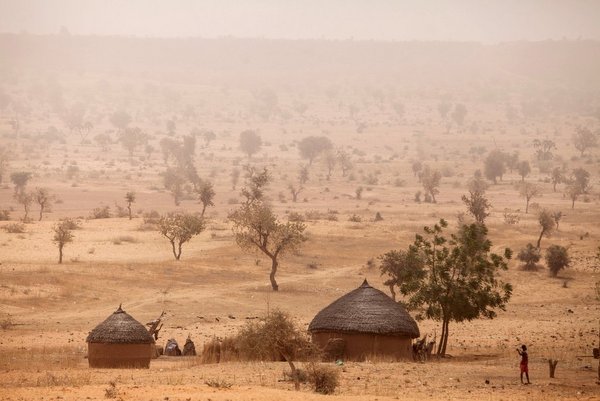 Read this article in French
Read this article in French- Share this article
- Subscribe to our newsletter
Economic benefits of the Great Green Wall
The African Green Wall not only helps combat climate change and foster food security, it also makes economic sense – although not everywhere in the Sahel. This is the conclusion of a study conducted by the University of Bonn and the Food and Agriculture Organization of the United Nations (FAO) and published in November 2021. The analysis also shows the extent to which violent conflicts threaten the success of the program.
The Sahel region south of the Sahara extends from Senegal in the west to Ethiopia in the east of Africa. Vast areas of the formerly fertile region are now virtually uncultivated. The reasons for this are drought, poor agricultural cultivation methods and overuse due to the growing demand for food and fuelwood.
The Great Green Wall initiative aims to compensate for and reverse this loss through the mass planting of native trees and grasses. 100 million hectares of land are to be restored in this way. So far, however, this ambitious goal is very far from being achieved – partly because of a lack of financial resources. However, this could change in the future: earlier this year, various donor countries pledged nearly USD 15 billion to the project at the One Planet Summit for Biodiversity.
Economic returns depend on a number of factors
In their study, the researchers divided the Sahel region into 40 million plots of 25 hectares each. For each of these, they analysed which land restoration measures would be possible and how much they would cost. They compared this with the economic benefits that could be achieved.
The results show that building the Green Wall is also economically worthwhile. Exactly how worthwhile depends on a number of factors. As a rule, reforestation would be the most advantageous option, both economically and ecologically. But it takes decades for a few hundred seedlings to grow into a forest. The investment therefore only bears fruit in the very long term.
The situation is different when degraded areas are converted into farmland, where the first harvest is possible after just one year. Cropland restoration can thus pay for itself comparatively quickly, and many poor smallholder farmers also prefer quick returns from their restoration activities. However, the economic gains that can be achieved here are significantly smaller, as are the environmental benefits.
In their analysis, the researchers worked with different scenarios, some focusing more on short-term benefits, others more on the long term. The baseline scenario includes a mix of both short-term and long-term returns. Here, every dollar spent yields an average net return of 20 cents.
Violent conflicts are hindering positive development
There are huge variations in the economic potential of the conflict regions. The most positive economic balance is for parts of Nigeria, Eritrea and Ethiopia. This is where investment in the Green Wall is most worthwhile. To finance all the proposed measures in this scenario, a sum of USD 44 billion would be needed. This would enable 28 million hectares of land to be restored.
However, the analysis also shows that this would probably only work in theory. As a result of the violent conflicts, many of the regions in which it makes economic sense to build the Green Wall are simply too unsafe. And without these areas, there are just 14 million hectares left. “This shows how much such disputes not only cause direct human suffering, but also prevent the positive development of the affected regions,” points out Alisher Mirzabaev of the Center for Development Research (ZEF) at the University of Bonn.
(University of Bonn/ile)
Read more at University of Bonn website





Add a comment
Be the First to Comment